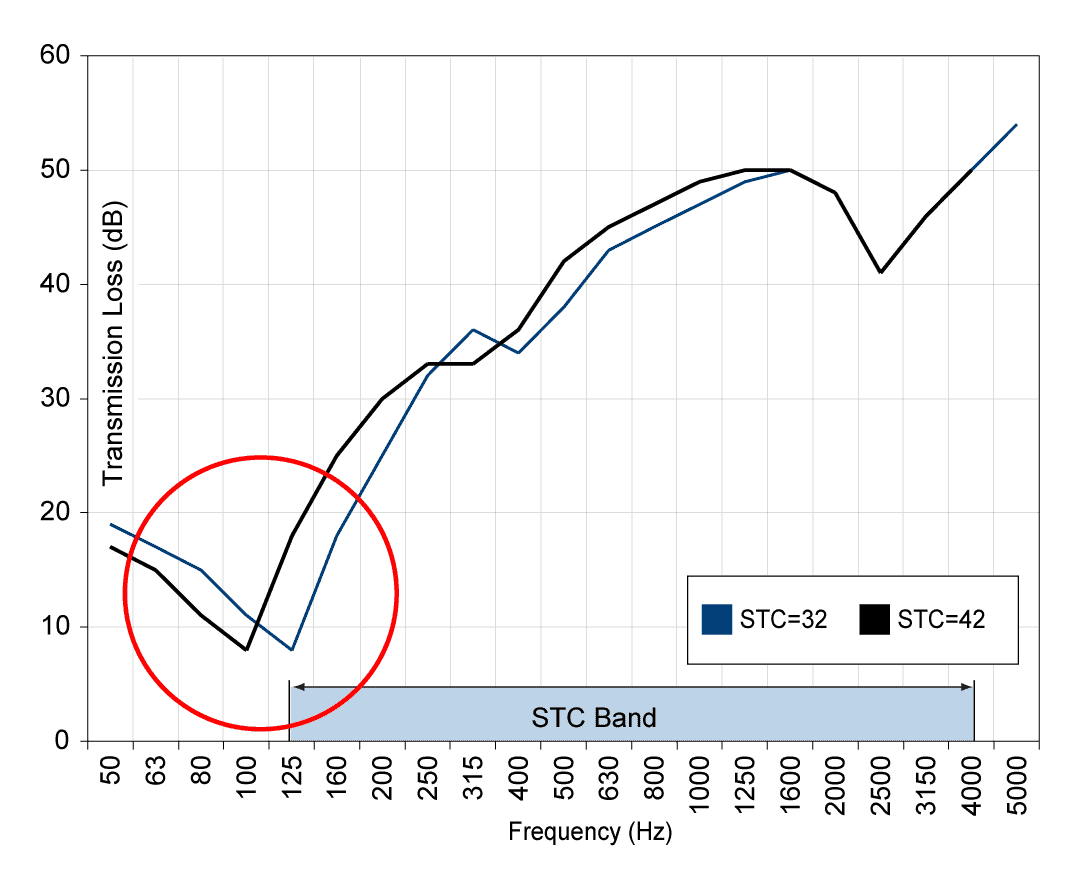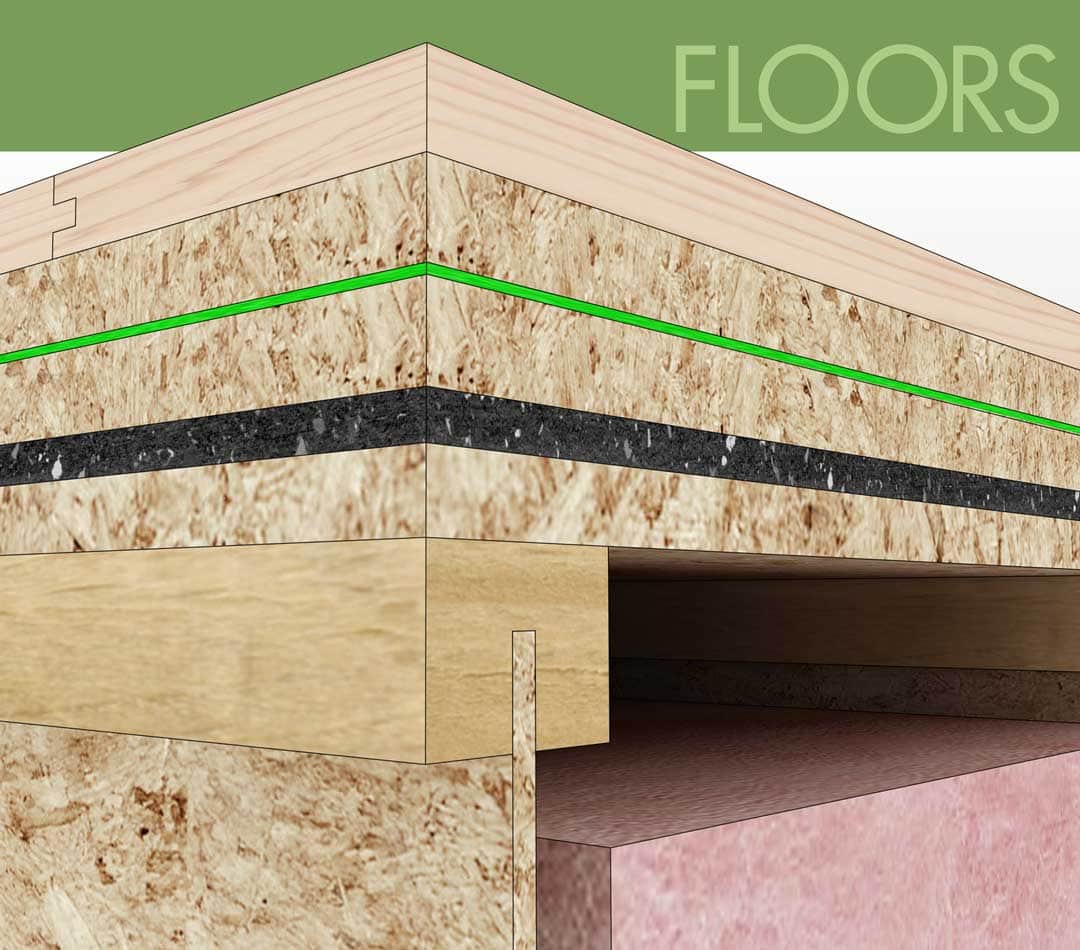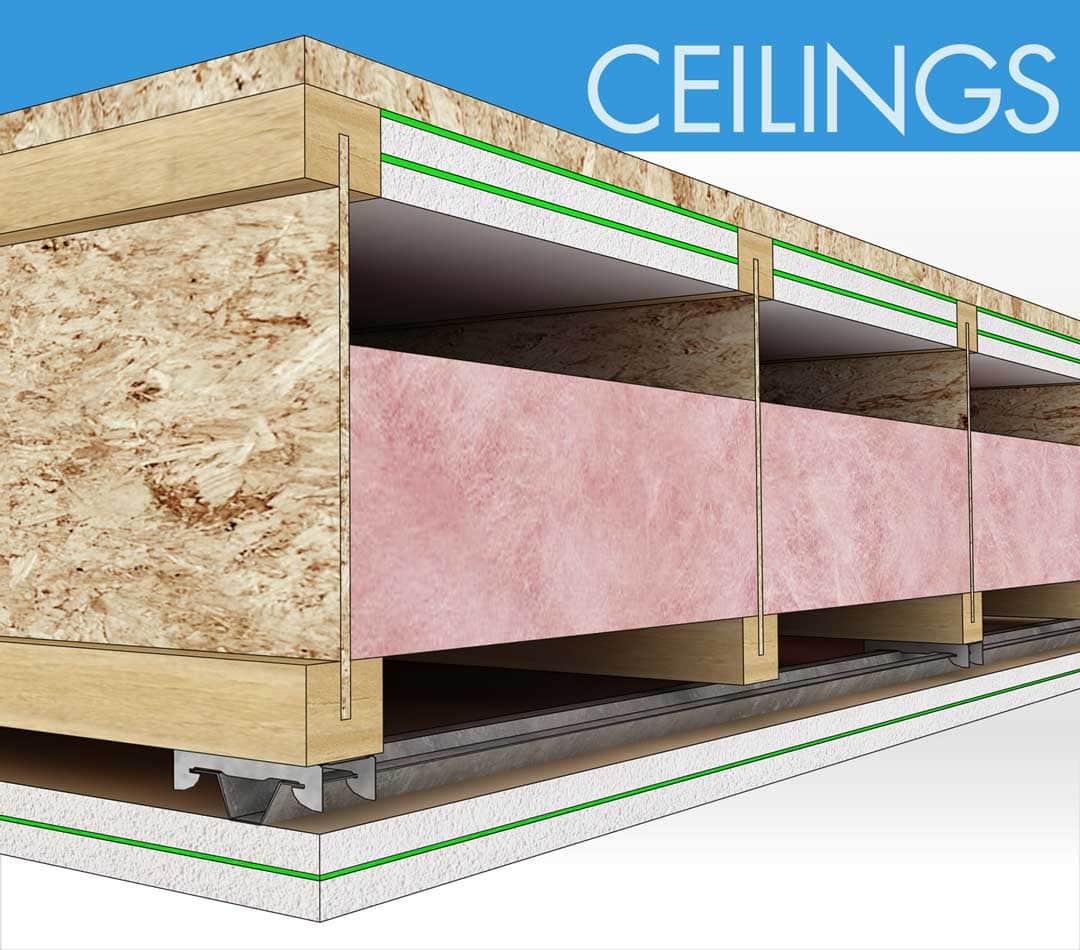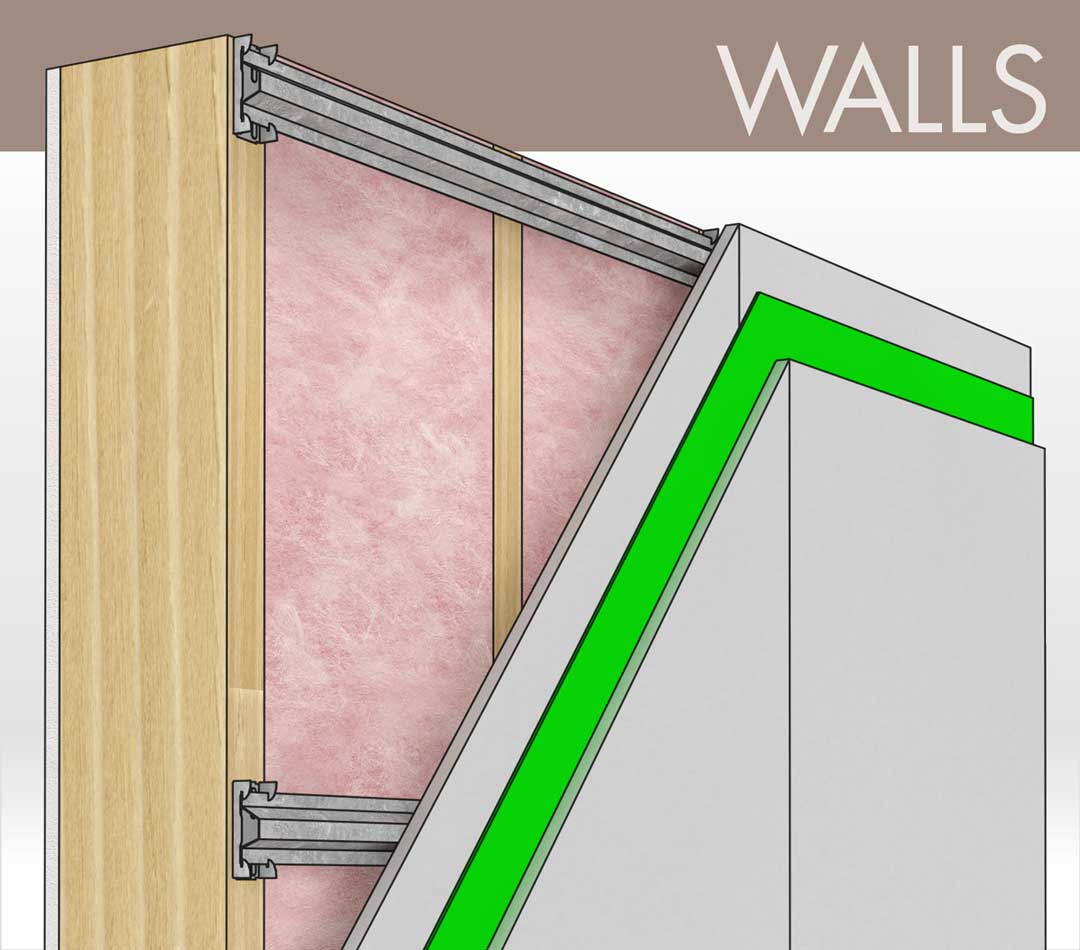What is STC, OITC, IIC, and Delta IIC (ΔIIC)?
STC stands for sound transmission class
This is the most common rating used in North America for determining airborne sound transmission loss between 125 and 4,000 Hz. This range covers the majority of common noises we hear including speech, television, music, dogs barking, and other similar annoyances. A higher STC rating often shows improved performance. However, the rating is essentially an average over the 16 frequency points tested.
Because of this, a product can perform exceptionally well in one range, poorly in another, and still end up with a better STC rating than a competing product that may have performed better in a frequency range more relevant to your project requirements.
This is a pretty common occurrence that should not be ignored when comparing products. Sort through the misleading ratings by gaining access to actual sound test data showing the STC contour line on the transmission loss graph. The performance in relation to the STC contour line will reveal the consistency of the product over the most common frequencies.
The STC rating for a basic insulated 2×4 wall with a single layer of drywall on each side is 35-38. This rating increases to STC 42-45 with steel studs. The STC rating for a basic wood structure floor/ceiling is 40-43. The STC rating for a six inch concrete sub-floor is 52-55.
A good level of isolation for walls and ceilings is STC 50 plus. A high level of isolation for walls is STC 60 plus with ceilings at STC 50 plus.
OITC stands for outside inside transmission class
The original purpose of the OITC rating was to determine performance of products in relation to exterior noise, which is often heavy in low frequencies. We also use the OITC rating to determine a product’s value for use in low frequency sensitive areas such as home theaters and recording studios. The OITC rating represents transmission loss results from 80 to 4,000 Hz using a different mathematical equation than the STC rating. The results express in decibels as opposed to the point system used to determine STC ratings and with weighting more towards low frequency performance. A higher number shows better performance.
Extreme mass and decoupling are requirements to isolate low frequencies. As a result, OITC ratings are typically much lower than STC ratings. When planning an isolation project, the OITC rating is often more crucial than the STC rating. This is because of the inclusion of the 80 and 100 Hz frequencies in the OITC calculation. These two frequencies are now more commonplace thanks to high quality speakers and sub-woofers.
IIC stands for impact insulation class
Acoustic labs conduct the IIC test using a tapping machine with steel faced hammers. These hammers strike a test floor material generating sounds between 125 to 4,000 Hz. The impact creates vibrations that travel through the floor into the receiving side (the room below). The engineer plots the results of each tap on a graph, compares the results to the reference assembly, and determines the IIC rating from comparing these two tests. A higher number shows better performance. The IIC rating does not account for any squeaking or rattling caused by loose wood frame construction. Nor does it account for low frequency footfall noise or structural deflection.
The IIC ratings for basic concrete sub-floor with no resilient underlayment is around 28 to 35 IIC. The IIC ratings for basic wood structure with no resilient underlayment is around 40 to 45 IIC. Without the addition of sound isolation products, the IIC rating of basic wood structures will rate better than concrete structures because they are naturally more resilient.
An IIC rating of 50 and above is most common in building code and HOA requirements.
DELTA IIC (ΔIIC)
The Delta IIC rating shows what the product adds to the assembly in terms of isolating impact footfall noise. The Delta IIC test starts by testing a full assembly, typically six to eight inches of concrete, with nothing above or below the concrete. Then an underlayment installs directly to the concrete, and the same test repeats. The Delta IIC rating is the performance gain between the first and second test. A higher number shows better performance.
The Delta IIC rating is the best rating to consider when comparing the performance of different types of underlayment. It keeps the manufacturers from promoting misleading results obtained by using materials or methods of isolation that the average assembly does not use. Misleading results are most often found with claims of 60 IIC or above using materials less than 1/2” thick. They achieve their astronomical rating with decoupled ceilings and considerable additional mass, but will claim their thin underlayment is what achieved that IIC rating. If the IIC rating is unreasonably high, then ask to see a Delta IIC rating. If they cannot provide a Delta IIC rating, then ignore the advertised ratings.








